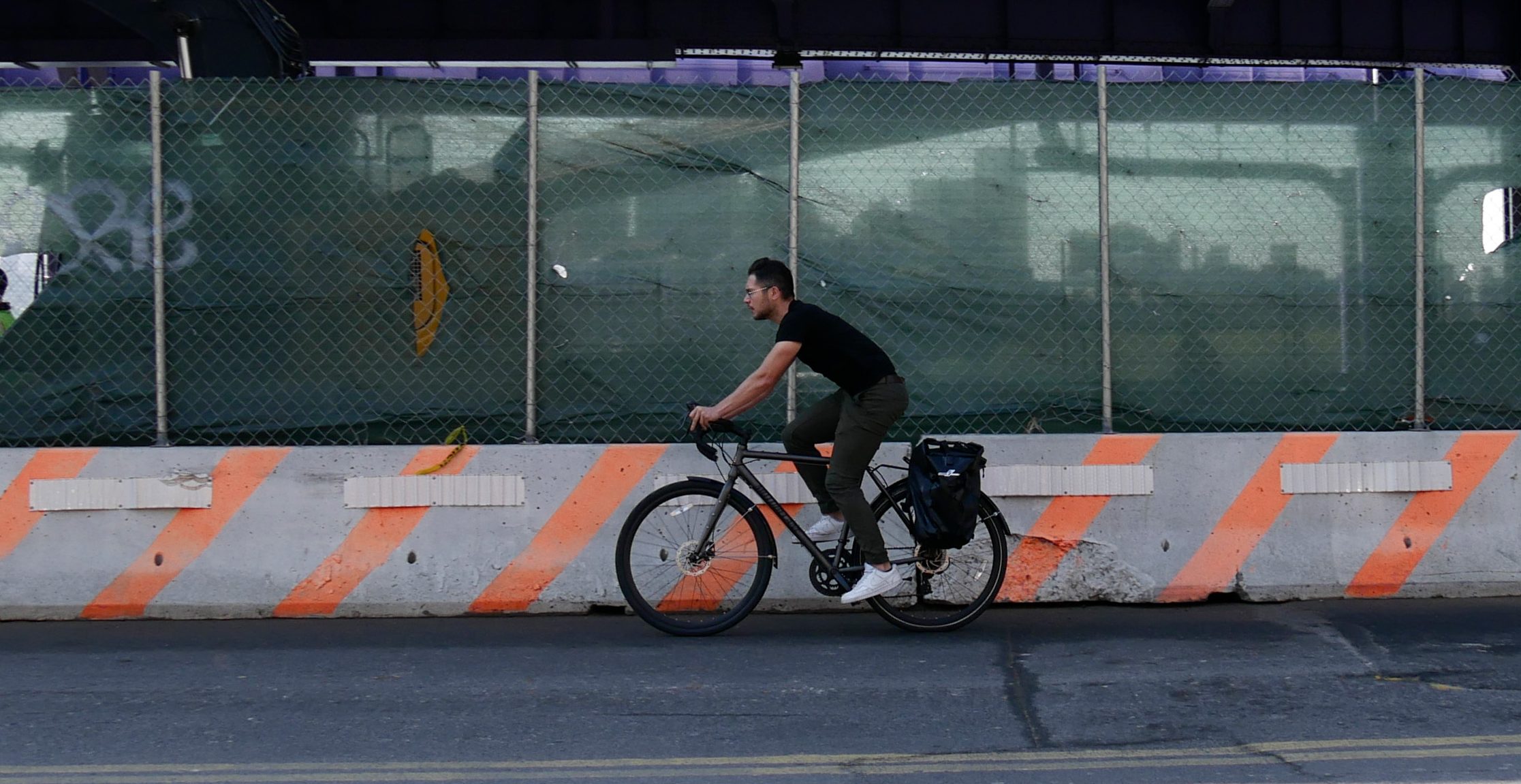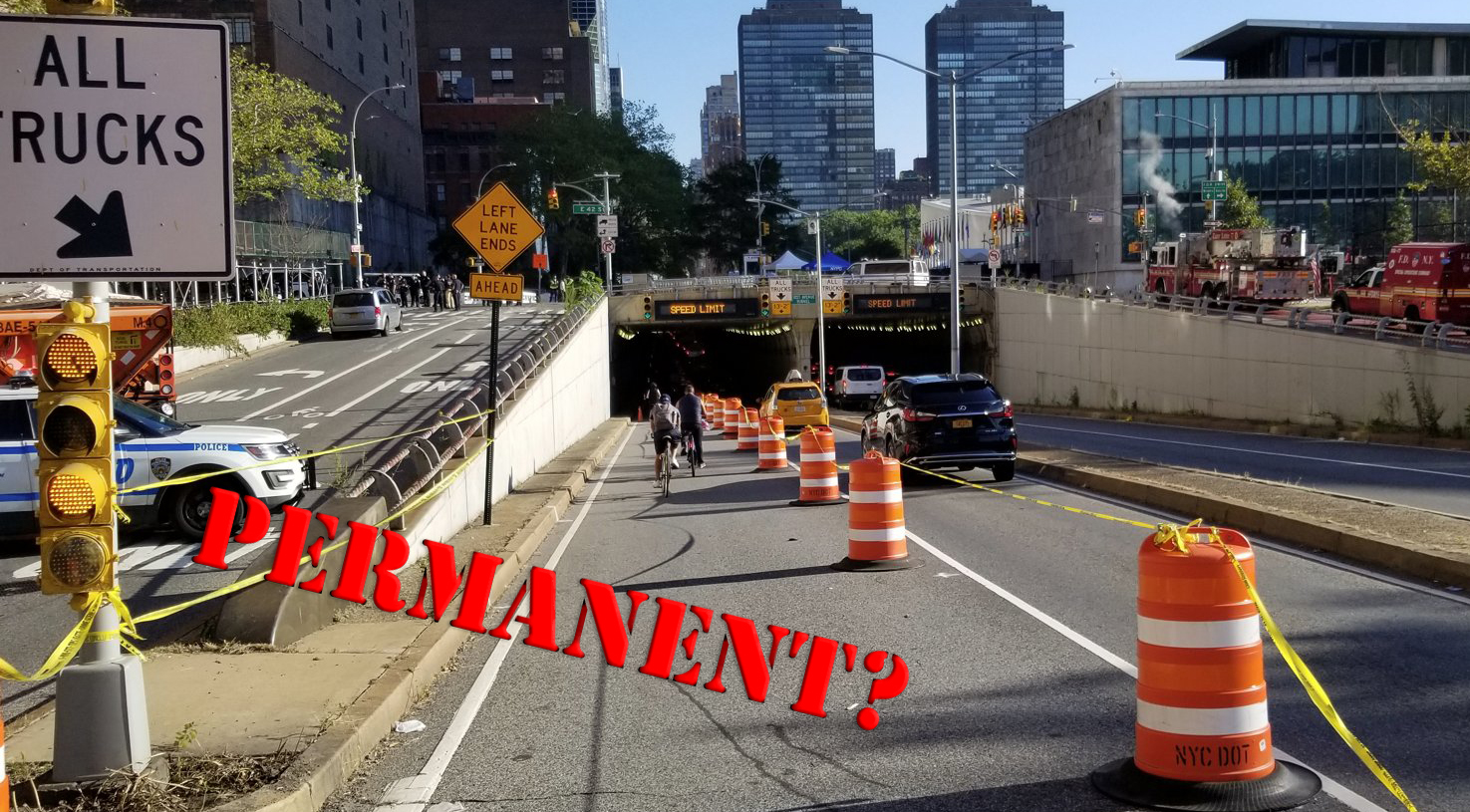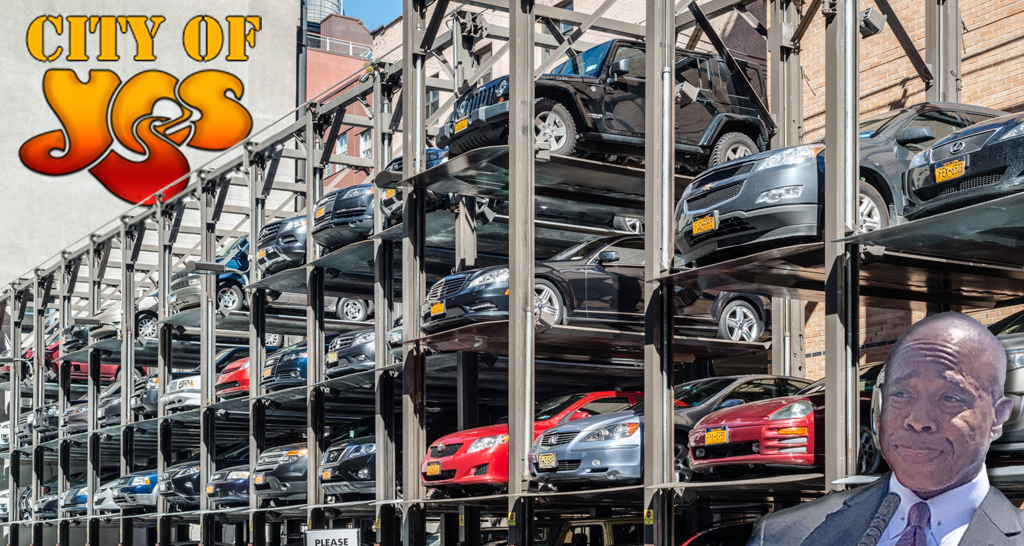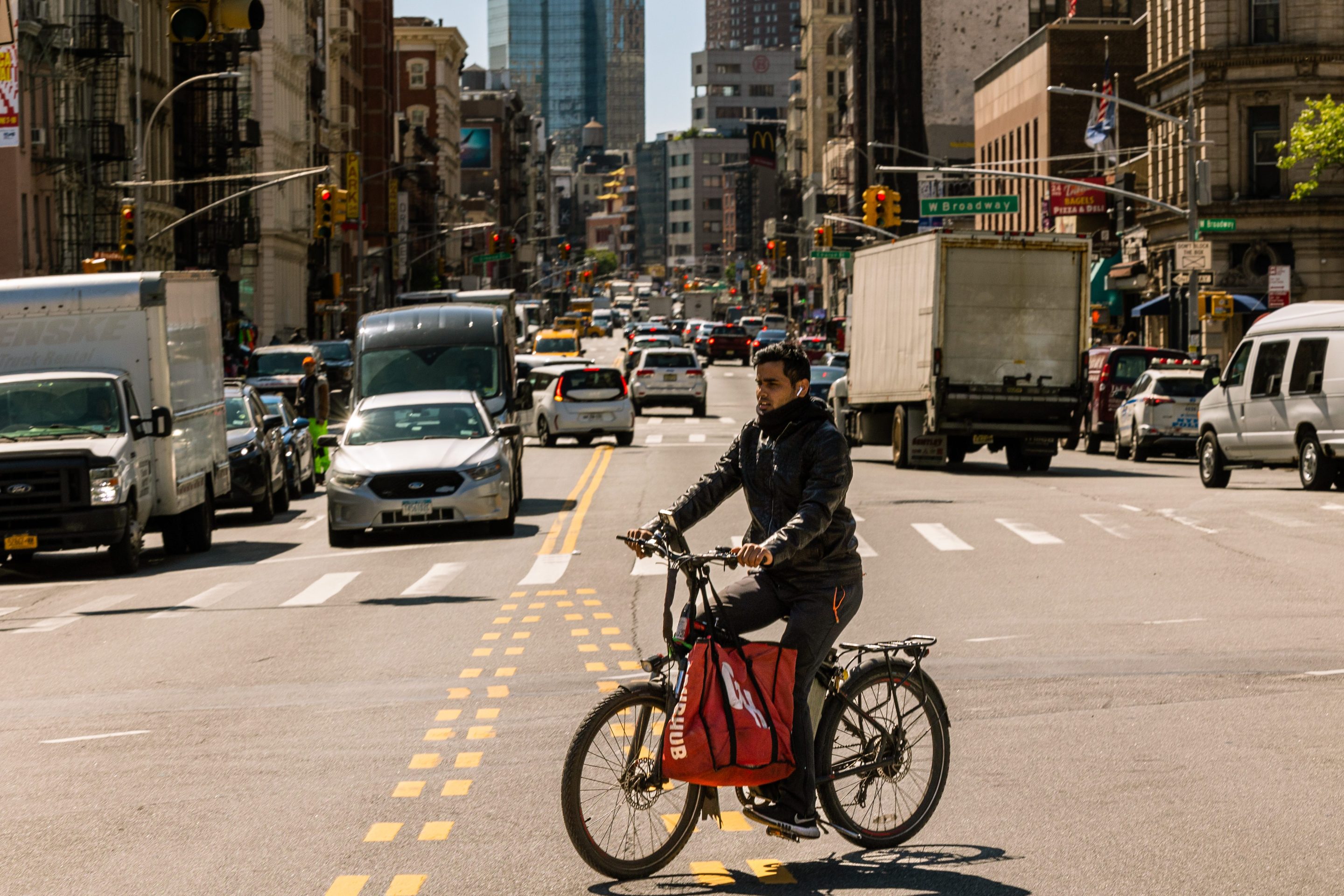East Side electeds continue to express support for the MTA and NYCDOT's redesign of First and Second Avenues while pushing for a more complete corridor. In exchanges with Streetsblog this week, they called attention, in particular, to the absence of plans for separated bus lanes along the corridor.
Assembly Member Jonathan Bing, who represents the Upper East Side and East Midtown, praised the redesign, "even if it's not everything that we asked for." The release of a specific design, he said, "brings into sharper focus the major benefits we will get." But Bing didn't hide his displeasure with the bus lanes: "I was one of the signatories to a letter a couple of weeks ago calling for segregated lanes and obviously anything that does not comport with the terms of the letter is disappointing."
Two years ago, a bill sponsored by Bing enabling the use of bus-mounted enforcement cameras fell short in Albany, a measure which he says is now urgently needed. "This current decision makes it even more important that we push for cameras, as that's going to be pretty much the only means of enforcement," he said.
State Senator José M. Serrano, whose district stretches from the West Bronx down to East Harlem and Yorkville, didn't single out the corridor's design itself but called on DOT and the MTA to implement the project equitably. Many improvements are on hold in Serrano's district pending Second Avenue Subway construction.
"This new service
will improve the commute for East Side residents from the Lower East
Side, all the way north to my district in East Harlem," he said. As such,
Serrano "would like to emphasize how important it is that the design be
completed in full throughout the corridor... We must ensure that,
wherever possible, equal facilities and infrastructure -- such as the
separated bike lane or the red painted bus lane -- are provided to the
entire corridor."
Assembly Member Micah Kellner, who also represents the Upper East Side, told Streetsblog he's excited about the project, particularly after some of his concerns about station placement had been addressed. Even so, he isn't satisfied. "My remaining concern is the lack of physically separated bus lanes," Kellner said. "While I appreciate the need to address the needs of businesses that rely on deliveries," he added, "the primary goal of SBS must be to provide mass transit consumers with uninterrupted, speedy service along the First and Second Avenue corridors -- this should be the priority over all other small inconveniences."
With regards to separated bus lanes, Manhattan Borough President Scott Stringer didn't stake out a position but restated his belief that the current designs are not yet final, saying that he will be "working closely with members of the East Side Community Boards and the Department of Transportation" to keep communication open and guarantee that "the final proposal balances the needs of the community and the logistical realities of these two corridors." Stringer was not a signatory of December's letter calling for separated bus and bike lanes.
City Council Member Jessica Lappin, also an Upper East Side representative, agreed that "the most important thing is that we move forward with Select Bus Service," while standing by her position that the corridor should receive separated lanes for both bikes and buses.
Lappin noted that in many parts of her district, subway construction would leave much of Second Avenue without any improvements. "I can understand that they don't want to put in infrastructure that they have to take out, but we need infrastructure that works," she said. "I don't want people thinking that they're in a free-for-all zone when the barriers suddenly end." She called on the MTA and DOT to develop a solution to ensure that, even in construction zones, First and Second Avenue cyclists and pedestrians are safe and buses move quickly.
The MTA and DOT both said they'll take the response from electeds into account. "We're encouraged by the feedback we've received so far, and we look forward to receiving additional input as the design process moves forward," an MTA spokesman said.
"We're excited by the innovative proposal we presented last week and will take into account the feedback we received at that meeting -- where the plan was generally well-received," said a DOT spokesman. "We also look forward to getting additional community input at next month's board meetings."





